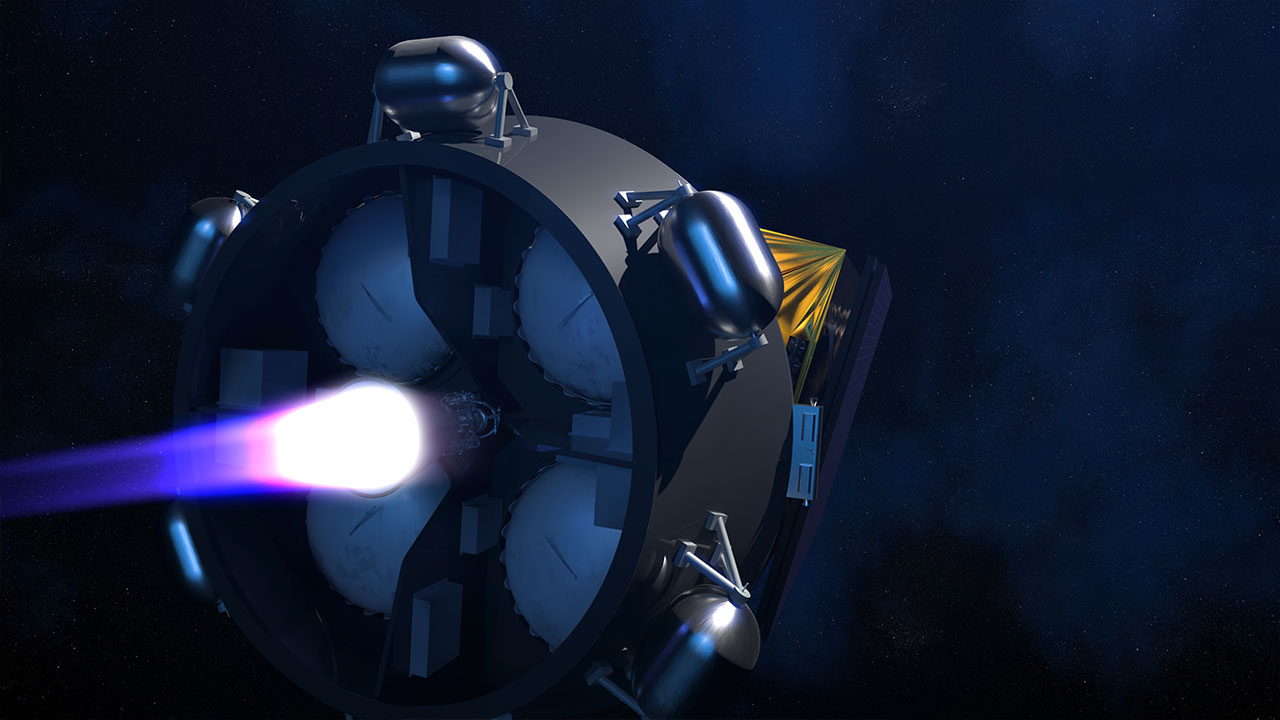ArianeGroup wins ESA’s “ASTRIS” competition for an even more versatile Ariane 6
13.07.2021
In the framework of the Ariane 6 Competitiveness Improvement Programme, the European Space Agency has appointed ArianeGroup as prime contractor for the development of a complementary stage for Ariane 6, the “ASTRIS” kick-stage. ArianeGroup development activities are worth €90 million Developed by ArianeGroup in Germany, ASTRIS is a true additional stage, called a “kick-stage”, that will further increase the versatility of Ariane 6 and enhance performance for new types of mission Powered by the BERTA engine with storable propellants, ASTRIS will increase the capability to inject satellites directly into geostationary orbit (GEO), allow electrically-powered satellites to reach their orbits in a few hours instead of in a few months, and facilitate missions to the Moon and deep space The first Ariane 6 mission equipped with the ASTRIS kick-stage is scheduled for 2024

The European Space Agency (ESA), as part of its Ariane 6 Competitiveness Improvement Program, has chosen ArianeGroup to develop and build a complementary stage (kick-stage) for Ariane 6, called ASTRIS, which will enable Arianespace, operator of the new European launcher, to place with even greater efficiency a larger number of payloads in different orbits, or to inject satellites into geostationary orbit (GEO).
This optional stage will also contribute to enhanced performance for certain Ariane 6 missions, including those to the Moon or deep space, as it will make for reduction in spacecraft complexity and the risks inherent in orbit injection.
Worth a total of €90 million, the contract follows a decision made at the ESA Ministerial Conference in November 2019.
For this development, ArianeGroup will call on a number of SMEs and start-ups, including Berlin-based PTS for the electronics system, RST in Rostock for the mechanical ground support equipment, electrical harnesses and part of the electrical ground support equipment, and the Austrian company FACC for the primary structure.
ASTRIS will be powered by an innovative engine called BERTA (Bi-Ergoler RaumtransporTAntrieb), based on technologies developed as part of ESA’s Future Launchers Preparatory Program (FLPP).
This type of engine can be reliably reignited several times, making it particularly suitable for extended missions or for transport to different orbits.
The first flight of an Ariane 6 with the new ASTRIS kick-stage is currently scheduled for 2024.
ASTRIS will be placed between the upper stage and the payload or between the Ariane Double Launch System (DLS) and its payload (which can consist of one or several satellites), reducing the amount of fuel required for orbit injection.
Even more than with a “standard” Ariane 6, the kick-stage will simplify the orbit injection at different inclinations of satellites of the same constellation.
Finally, this small additional stage will be particularly useful for launching electrically-powered satellites. Once placed in their transfer orbit, these satellites may take several months to reach their final orbit. Thanks to the ASTRIS kick-stage, this phase can be reduced to a few hours, which constitutes a significant advantage for operators choosing this option. This will reinforce Ariane 6’s position as the most precise launcher on the market, capable of bringing a satellite to the last kilometer of its final orbital position.
The ASTRIS system is developed for ESA at ArianeGroup’s Bremen site, the European center of excellence for upper stages, in close collaboration with its Ottobrunn (engines) and Lampoldshausen (propellant pipes and valves) sites. ArianeGroup’s unique expertise, acquired through long and close cooperation between these establishments, is the hallmark of the European market leader.
Pre-development activities already carried out on the BERTA engine under the FLPP will enable the engine to be developed at ArianeGroup’s Ottobrunn site south of Munich within the same timeframe as ASTRIS, to secure its market entry. ArianeGroup has already successfully tested a prototype of this engine on the test bench of the German Aerospace Center (DLR) in Lampoldshausen. BERTA is an engine in the 4 to 5 kilonewton class, designed to operate with room-temperature storable propellants.
The funding of the kick-stage and the BERTA engine is provided in the framework of ESA’s Competitiveness Improvement Program (CIP).